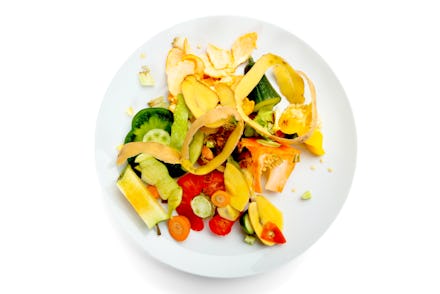The secret ingredient at this Brooklyn restaurant? Food that’s normally considered garbage

Seventy-two billion pounds of food is wasted every year in the U.S., with restaurants making a significant contribution to that waste: According to a 2016 report by the Food Waste Reduction Alliance, 93.7% — or 1.83 billion pounds, roughly — of uneaten food in American restaurants is thrown away. Just 4.2% (83.1 million pounds) is recycled and only 2% (39.2 million pounds) is donated.
Kitchens across the country are looking for new ways to waste less and cook more. At Reynard, a restaurant at the Wythe Hotel in Brooklyn, New York City, executive chef Christina Lecki has plans to make the restaurant a “zero-waste” kitchen.
“[It] literally means you’re wasting 0% of your food and products,” Lecki said in an email. “I’d say we’ve reached approximately 50% of that goal so far. Working in restaurants has made me so aware of how much food and trash actually gets wasted per day, and it doesn’t necessarily have to, and I want to break that mold.”
Instead of donating unused food, Lecki’s zero-waste initiative challenges her staff to develop creative, delicious recipes that use as much of the food as possible. “My thought is, it’s usable, free energy — why waste it?” Lecki said, explaining how vegetable trim goes into powders or ferments, herb stems are used for vinegar or stocks and bones beef up broths and soups. The restaurant has zero animal waste, she said, because beyond the bone stock, all of the byproducts and cuts go into other dishes to add flavor.
In other words, every scrap counts.
“We’re also starting to experiment with a 24-hour cooking schedule. We use a big coal oven in the Reynard kitchen, and at the end of each evening when we put out the fire, the coals stay hot for hours and hours,” Lecki said. “I’ve been putting tomatoes and squash in the oven overnight to start to cook — they get the most subtle, deliciously smoky flavor, and then we finish them off elsewhere.”
The focus on using every piece of food leads to creative and unfamiliar menu offerings: Fermented carrots amplify a buttermilk dressing; fingerling potatoes are flavored with tallow (beef fat), cider vinegar and fermented chili.
Food waste reduction isn’t a fleeting trend. Lecki cites chefs Matt Orlando from Copenhagen’s Amass — a sustainable restaurant that goes as far as repurposing coffee grounds for flatbread — and Dan Barber from New York’s Blue Hill as two of her inspirations. Barber helped pioneer Wasted, a popular initiative that encourages cooks to make dishes out of food parts that would normally be thrown away.
Without new efforts to lessen waste, food will continue to be incinerated and dumped into landfills, further contributing to a polluted planet and climate change — and dining at waste-conscious restaurants isn’t the only way to waste less. Lecki said the freezer is the first tool home cooks can utilize to reduce their own wasteful contributions: Save animal and vegetable trims for future broths and plan out meals before you shop to ensure you’re only buying what you need. And if you’re new to composting, check out this guide for beginners.